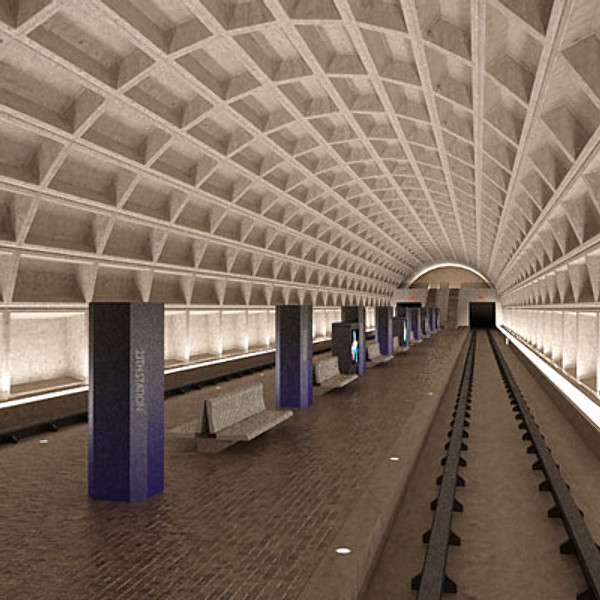Also, the Blue Line would have to be rerouted according to that picture and it would be very hard to add lines to the exsisting infastructure.
You know when they built Metro Center and other Transfer Stations they built it as a Red Line only with punch out walls for exspansion which was later the Blue/Orange.
Also, at the Bethesda station there are punch out walls for an escalator up to a propoesed ground level Purple Line Terminus.
New Carrolton Station, and Largo Town Center are both rigged for line exstenstion.
And they built the West Falls Church station with a pillar which is intened for silver line use.
Pentagon Station has punch out walls in the tunnels for a line to spur off it.
They plan ahead and they tried making it easier for themselves later.
The only thing they didn't plan for was adding 3rd and 4th tracks. Whoops!
They really need em.
Davis
For those of you interested in Metro history, I recommend "Great Society Subway" by Zachary Schrag. There is a bit about some of the planning for future extensions.
Most of the end-of-line terminals include provision for extension beyond the terminus. One of the exceptions is the southern Green Line terminus at Branch Avenue.
The "knock-out panels" in the tunnels just south of Pentagon were mainly added to placate the Arlington County Government with the idea of a possible future line out Columbia Pike. This line is now being considered for a streetcar line, which would terminate on the surface at Pentagon City. Metro is considering expanding the tunnel provisions there for gap train storage.
The downtown transfer stations, however, were NOT built with knock-out panels. They were built as they are today.
The Red Line level at Metro Center opened in 1976. The Blue and Orange Line level opened the next year, 1977. Entrances on the north and south sides of the station were accessible from day one, even though no trains were serving the lower level.
L'Enfant Plaza's Blue and Orange level, the lower level, opened in 1977 as well. Six years before the upper level (Green and Yellow) opened in 1983.
Gallery Place was not open for opening day (Red Line trains went through without stopping), but was open later that year. The entire complex, including the northern (7th/H) entrance was open before the Green and Yellow Line lower level opened in 1983.
The other perpendicular transfer station, Fort Totten between the Red (upper) and Green (lower) Lines was NOT constructed as a unit. The Red Line level and mezzanine were constructed above a gap left for the Green (lower) level, but the lower level was not constructed until construction for the Fort Totten-Greenbelt segment commenced in the early 1990s. It opened in December 1993. The Red Level opened in 1978.
Bethesda does not have knock-out panels. When the Purple Line is constructed, IF an LRT alternative is chosen by Governor O'Malley, it will be located in a shallow subway with an entrance at Elm and Wisconsin. Connection to the Red Line level, deep under ground, will be effected through express elevators only. It is not feasible to drill escalator shafts.
Some other stations do have knock-out panels for future mezzanine expansions.
*Pentagon City - southern end of the station, photo:
http://world.nycsubway.org/perl/show?30779
*Archives - southern end of the station.
*Federal Triangle, at existing mezzanine, east side of 12th Street, photo:
http://world.nycsubway.org/perl/show?21036







